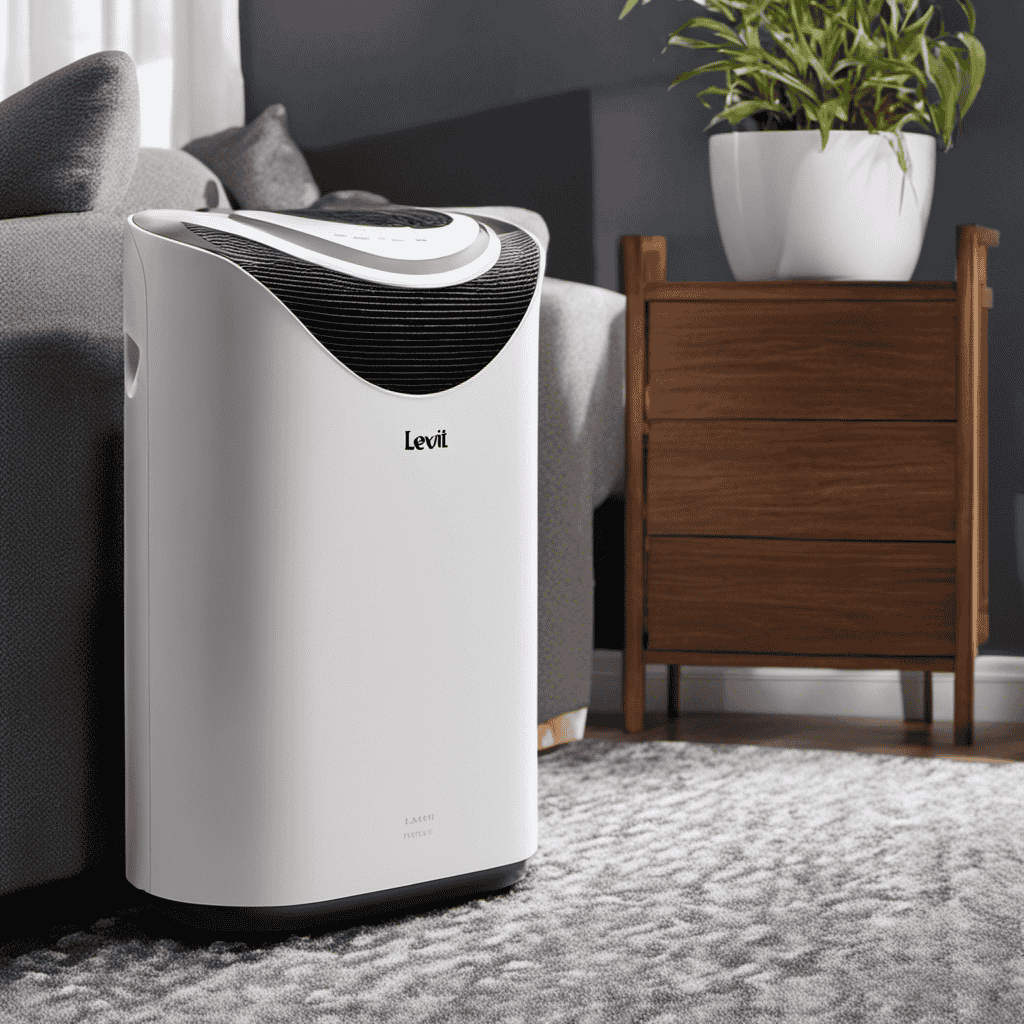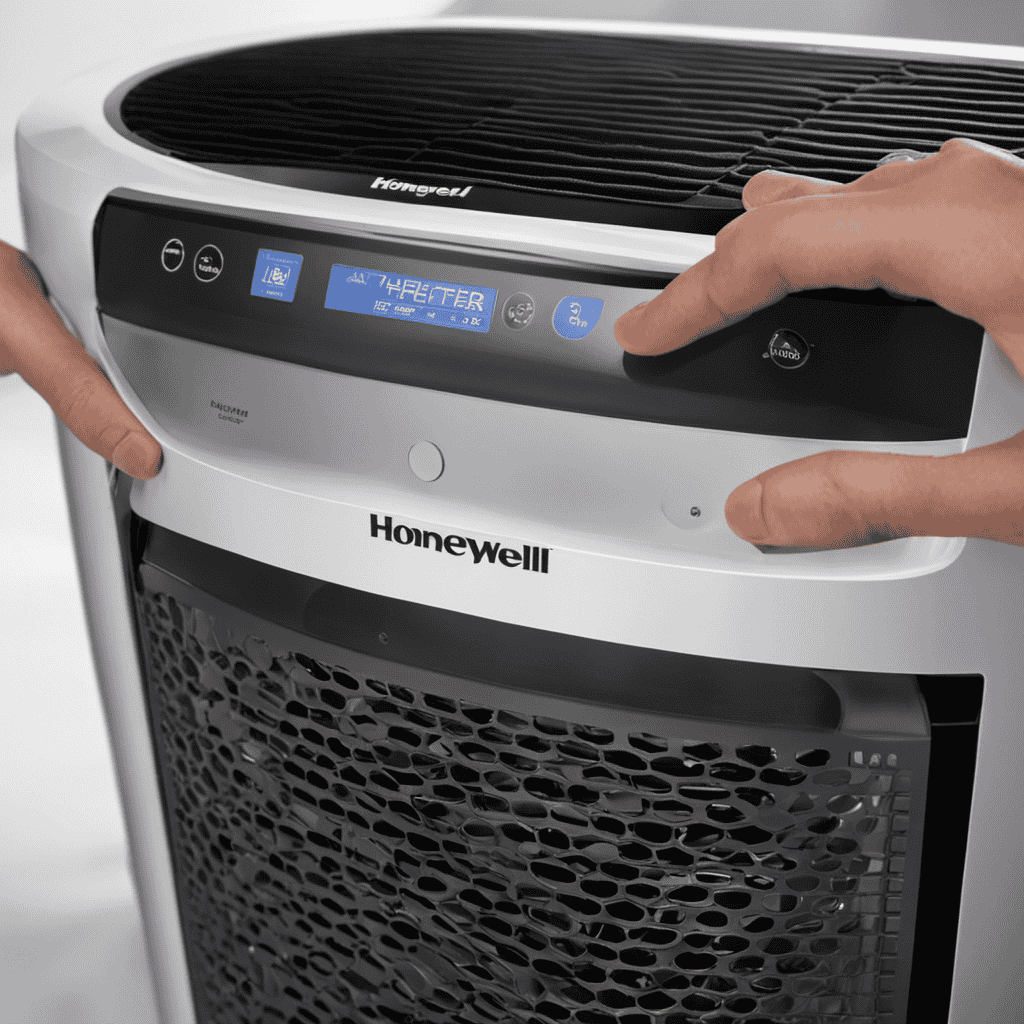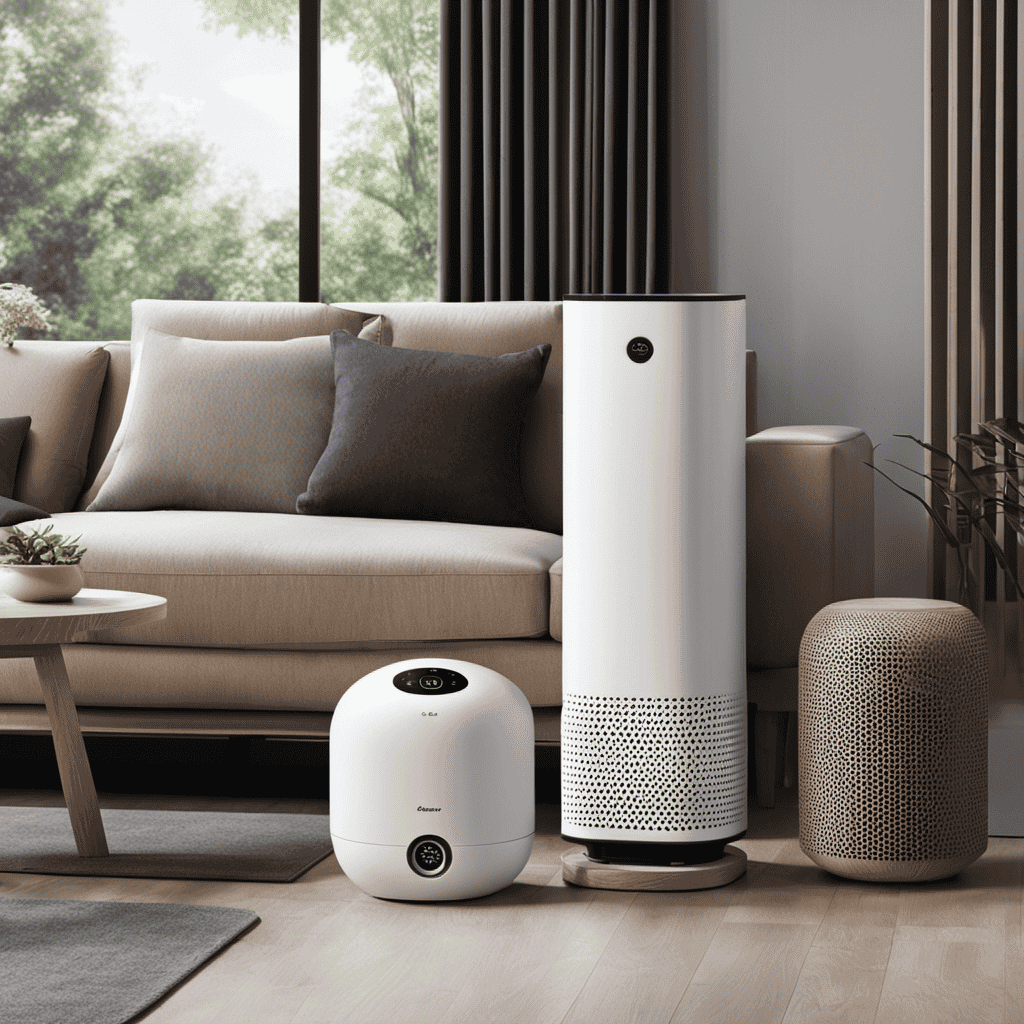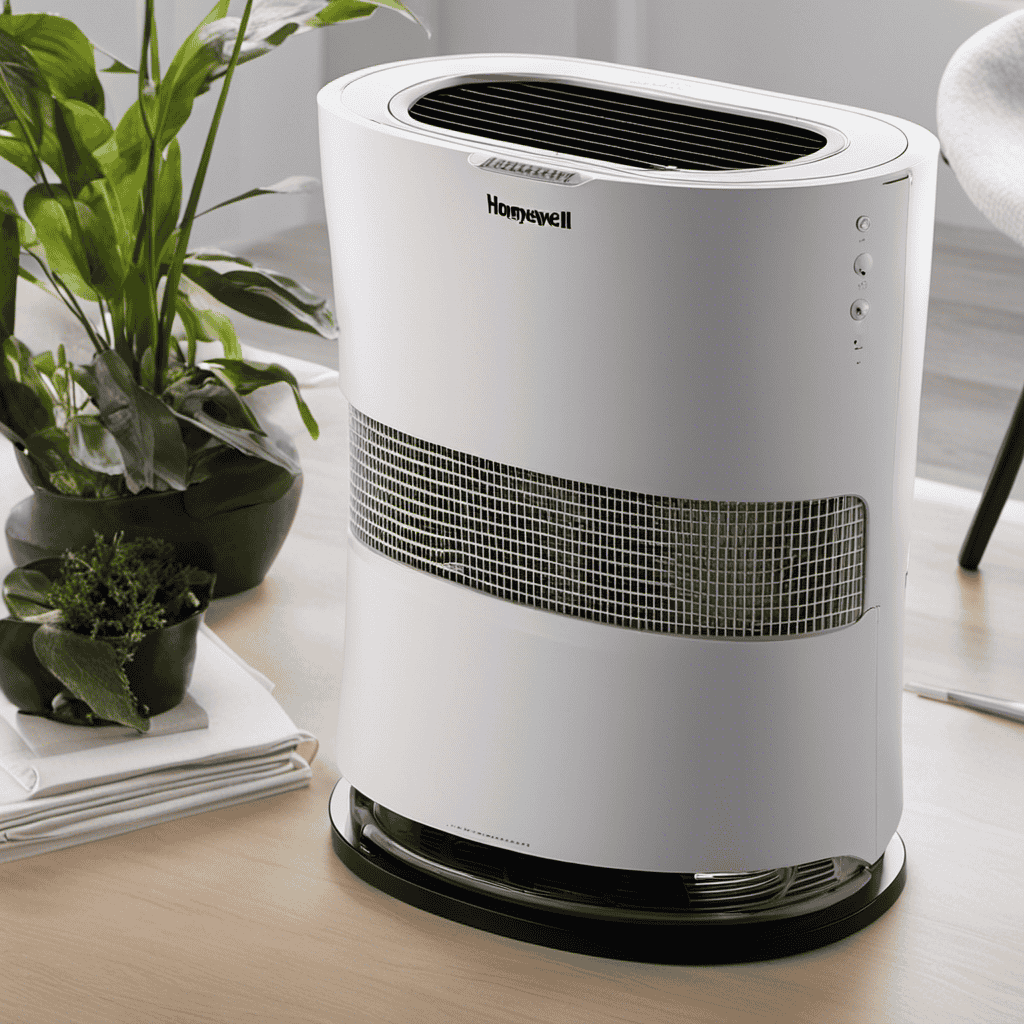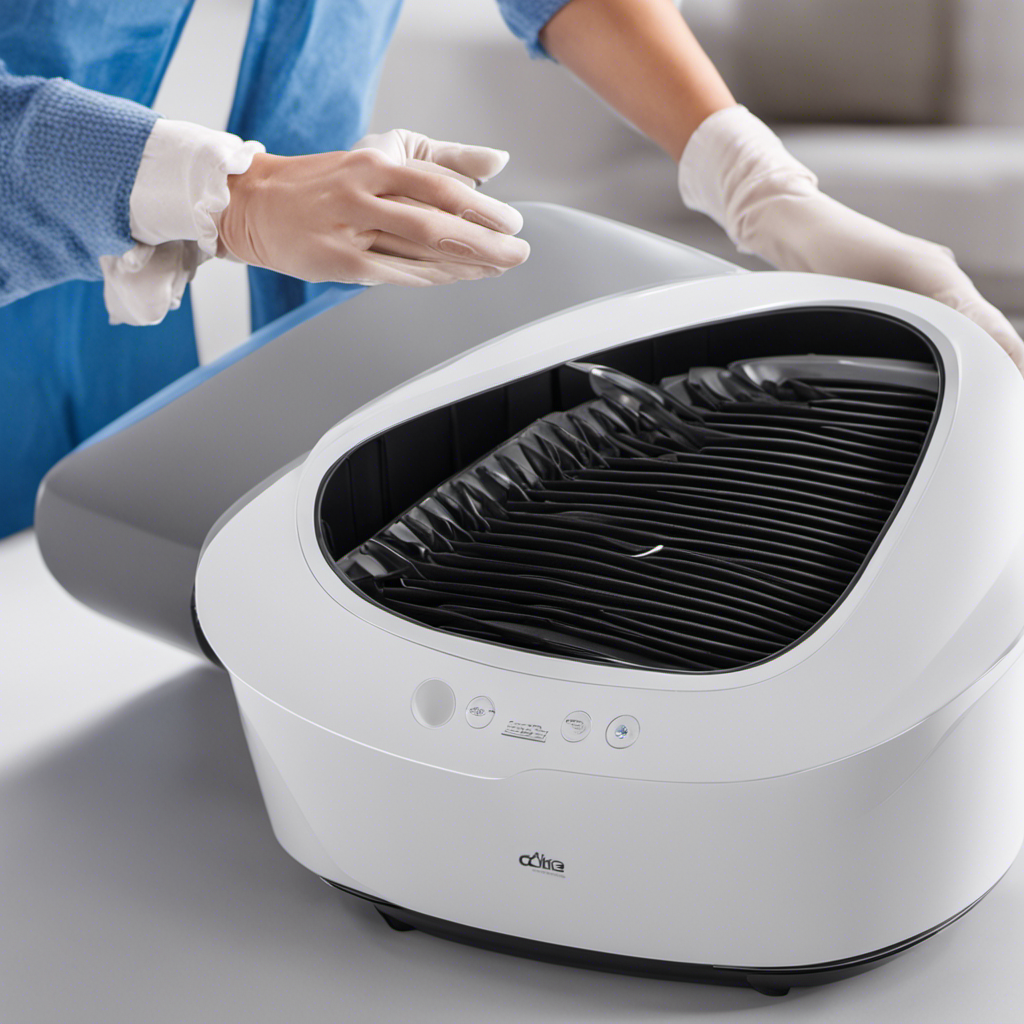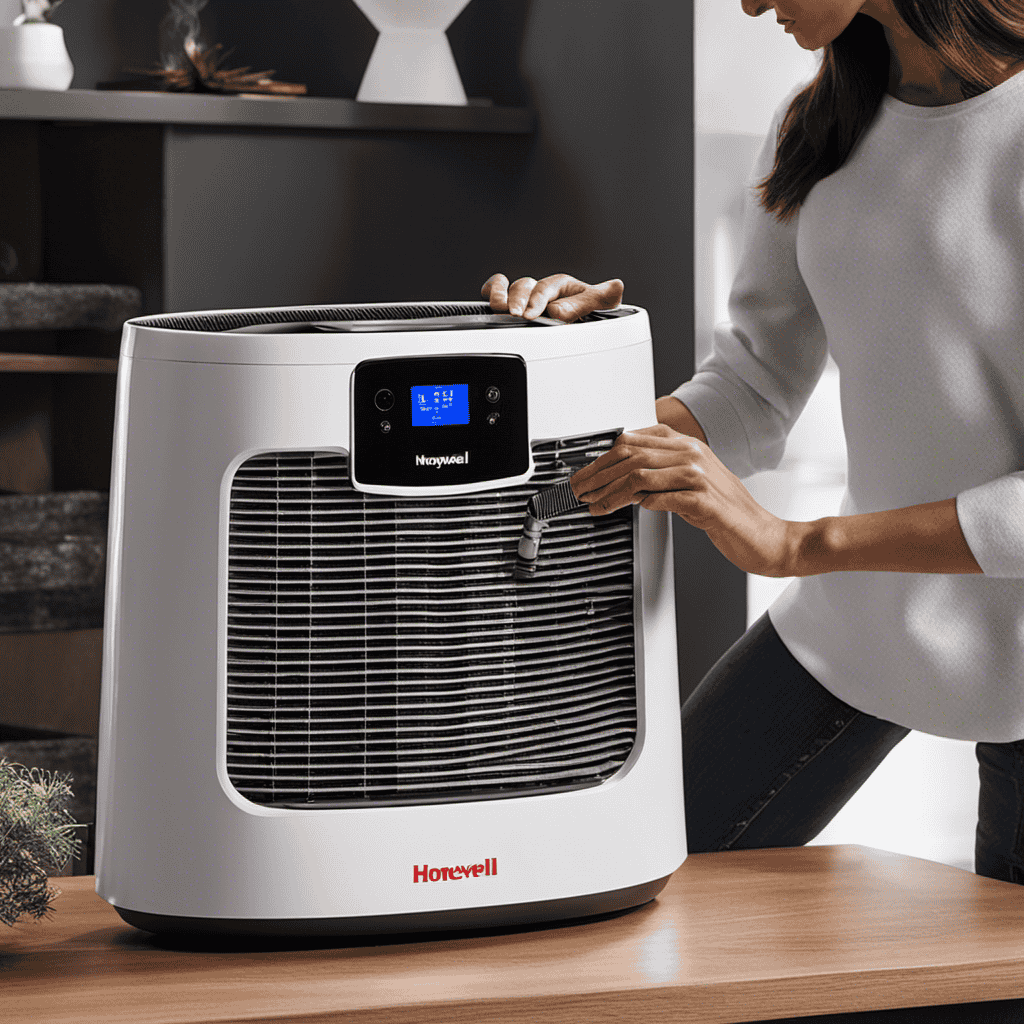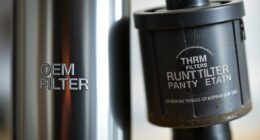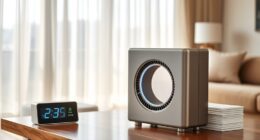I’ve had my Levoit Air Purifier for some time now, and I can honestly say that it has significantly improved the air quality in my home.
But here’s the thing – to keep it working at its best, you need to clean the filters regularly. Trust me, it’s worth the effort.
In this article, I’ll walk you through the step-by-step process of cleaning your Levoit Air Purifier filters, using the right techniques and supplies.
Let’s get started!
Key Takeaways
- Regular cleaning of air purifier filters is important for improving indoor air quality and reducing health risks.
- Different types of filters require different cleaning methods, such as vacuuming, washing with mild detergent, tapping or vacuuming loose particles, or simply brushing the surface.
- Proper maintenance, including regular cleaning and filter replacement, is crucial for the efficiency and longevity of the Levoit air purifier.
- Using the correct filters for your specific Levoit model is essential to ensure optimal performance and prevent damage to the purifier.
Understanding the Importance of Cleaning Air Purifier Filters
Understanding the importance of cleaning air purifier filters can significantly improve indoor air quality. Air purifiers are designed to remove common contaminants in indoor air, such as dust, pollen, pet dander, and smoke particles. By trapping these pollutants in the filters, air purifiers help create a cleaner and healthier environment.
Regularly cleaning the filters is essential to maintain their effectiveness. When filters become dirty and clogged, they are less able to capture airborne particles, reducing the benefits of using air purifiers. Neglecting filter maintenance can lead to poor air quality, increasing the risk of respiratory issues and allergies.
Therefore, it is crucial to clean air purifier filters on a regular basis to ensure optimal performance and improve the overall air quality in your home.
Now, let’s move on to gathering the necessary supplies for cleaning.
Gathering the Necessary Supplies for Cleaning
First, you’ll need to gather the necessary supplies for the cleaning process. To effectively clean your Levoit air purifier filters, you will need the following supplies:
- a vacuum cleaner with a brush attachment
- a soft brush or cloth
- mild detergent or vinegar
- warm water
- a clean towel
These supplies will help you remove dust, debris, and other particles that may have accumulated on the filters over time. It’s important to have everything organized and easily accessible before you start the cleaning process.
Additionally, if you prefer alternative cleaning methods, you can use compressed air or a blow dryer on a low setting to remove dirt and dust from the filters.
With the necessary supplies gathered, let’s move on to the step-by-step guide to removing the filters.
Step-by-Step Guide to Removing the Filters
To start removing the filters from your air purifier, you’ll need to locate the filter compartment. This can usually be found on the back or side of the unit. Once you’ve located the compartment, follow these step-by-step instructions to remove the filters:
-
Open the filter compartment by gently pulling or sliding the cover.
-
Take note of the types of filters installed in your air purifier. Levoit air purifiers typically have a combination of a pre-filter, a True HEPA filter, and an activated carbon filter.
-
Carefully remove each filter from its designated slot. Be gentle to avoid damaging the filters or the surrounding components.
-
Inspect the filters for any visible dirt or debris. If you notice excessive buildup, it’s time for deep cleaning.
Now that you have successfully removed the filters, let’s move on to the next section where we will discuss the various cleaning methods for different types of Levoit air purifier filters.
Cleaning Methods for Different Types of Levoit Air Purifier Filters
Once you’ve removed the filters from your Levoit air purifier, it’s important to know the different cleaning methods for each type. Here are the best cleaning products and common cleaning mistakes to avoid:
-
Pre-filter: This filter can be vacuumed or washed with water and mild detergent. Avoid using harsh chemicals or scrubbing too vigorously, as it may damage the filter’s structure.
-
True HEPA filter: This filter cannot be washed and should be replaced every 6-12 months, depending on usage. Use a soft brush or a vacuum cleaner with a brush attachment to remove dust and debris.
-
Activated carbon filter: This filter cannot be washed and needs to be replaced every 6-12 months. Gently tap or vacuum the filter to remove loose particles.
-
UV-C light filter: This filter does not require cleaning or replacement, as the UV-C light kills bacteria and viruses.
By following these cleaning methods, you can ensure that your Levoit air purifier filters are properly maintained and functioning effectively.
Now, let’s move on to the proper techniques for cleaning and rinsing the filters.
Proper Techniques for Cleaning and Rinsing the Filters
When it comes to maintaining the cleanliness and effectiveness of my Levoit air purifier filters, I have found that using effective cleaning methods is crucial.
In order to ensure the best air quality in my home, I make sure to clean and rinse the filters regularly.
Effective Cleaning Methods
You can use a soft brush or a vacuum cleaner to remove dust and debris from the Levoit air purifier filters. Here are four effective methods for cleaning your filters:
-
Dry Cleaning: Gently brush the surface of the filters to remove any loose particles. This method is ideal for light dust buildup.
-
Filter Replacement: If your filters are heavily soiled or damaged, it’s best to replace them. Levoit offers replacement filters that are easy to install.
-
Rinse with Water: For moderate dirt accumulation, rinse the filters under running water. Be sure to use cold or lukewarm water and allow them to dry completely before reinserting.
-
Vacuum Cleaning: Use a vacuum cleaner with a brush attachment to remove stubborn dirt and debris from the filters. This method is effective for deep cleaning.
Frequency of Filter Cleaning
To maintain optimal performance, it’s important to regularly check and clean your Levoit air purifier filters. Filter maintenance is crucial for the effectiveness of the air purifier in removing harmful particles from the air.
The frequency of filter cleaning depends on several factors, such as the air quality in your area and the usage of the air purifier. As a general rule, it is recommended to clean the filters every three to six months. However, if you live in a highly polluted area or if you use the air purifier frequently, it may be necessary to clean the filters more often.
Following these best practices ensures that your air purifier continues to provide clean and fresh air to your space.
Now, let’s move on to the next step which is drying and reinstalling the filters.
Drying and Reinstalling the Filters
Once the filters are clean, it’s time to dry them thoroughly before reinstalling. Proper drying techniques are essential to ensure the filters are completely dry and ready for use. Here are four steps to effectively dry and reinstall your Levoit air purifier filters:
- Gently shake off any excess water from the filters to remove the majority of moisture.
- Place the filters in a well-ventilated area, away from direct sunlight, to air dry completely. This will prevent any potential damage to the filters.
- Allow sufficient time for the filters to dry thoroughly. Depending on the humidity levels, this can take anywhere from a few hours to overnight.
- Once the filters are completely dry, carefully reinstall them into your Levoit air purifier following the manufacturer’s instructions.
Maintenance Tips for Extending the Lifespan of Levoit Air Purifier Filters
By regularly performing proper maintenance techniques, such as replacing the filters when necessary and keeping the air purifier clean, you can significantly extend the lifespan of your Levoit air purifier.
To prolong the filter lifespan, it is crucial to follow a few key maintenance tips. Firstly, always ensure that you are using the correct filters for your specific Levoit model. Using the wrong filters can lead to reduced efficiency and damage to the purifier.
Secondly, avoid the common filter maintenance mistake of neglecting to clean the pre-filter. This pre-filter traps larger particles, preventing them from clogging the main filter.
Lastly, it is important to clean the main filter regularly according to the manufacturer’s instructions. Neglecting this step can reduce the purifier’s effectiveness and potentially damage the motor.
Frequently Asked Questions
Can I Use a Regular Vacuum Cleaner to Clean My Levoit Air Purifier Filters?
Yes, you can use a regular vacuum cleaner to clean your Levoit air purifier filters. However, it may not be as effective as other cleaning methods. Consider using alternative methods like washing with water or using compressed air for better results.
How Often Should I Clean My Levoit Air Purifier Filters?
I clean my Levoit air purifier filters regularly to ensure proper maintenance. It’s important to know how often to replace them and how to keep them clean for optimal performance.
Can I Use Soap or Detergent to Clean the Filters?
Using soap or detergent on air purifier filters is not recommended. It can damage the filter and reduce its effectiveness. It is best to use specialized cleaning solutions for air purifier filters, as they are designed to safely and effectively remove dirt and contaminants.
Is It Necessary to Clean the Pre-Filter and the HEPA Filter Separately?
It is necessary to clean the pre-filter and HEPA filter separately. Regular pre-filter maintenance ensures optimal performance and prolongs the lifespan of the air purifier. Cleaning the filters regularly improves air quality and removes pollutants effectively.
Can I Wash the Carbon Filter Along With the Other Filters?
Yes, you can wash the carbon filter along with the other filters. However, it is important to follow the manufacturer’s instructions for washing frequency and cleaning methods to ensure optimal performance and longevity of the filters.
Conclusion
In conclusion, cleaning your Levoit air purifier filters is essential for maintaining the effectiveness and longevity of your device. By regularly cleaning and maintaining your filters, you can ensure that your air purifier continues to remove harmful pollutants and allergens from your indoor air.
Did you know that according to a study by the Environmental Protection Agency, indoor air can be up to five times more polluted than outdoor air? Therefore, it is crucial to clean your air purifier filters regularly to create a healthier living environment.
Follow the step-by-step guide and tips provided in this article to keep your Levoit air purifier filters in top condition.
